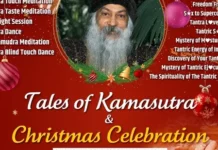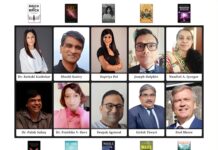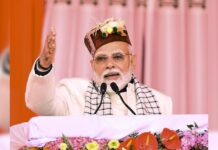 FLUSHING, NY: Cinema constitutes the most vibrant mirror of South Asian societies. “Representing South Asia on Film,” a year-long festival, from September 12, 2012 to April 25, 2013, planned in conjunction with Queens College’s Year of India program, will reflect South Asia in all its diversity.
FLUSHING, NY: Cinema constitutes the most vibrant mirror of South Asian societies. “Representing South Asia on Film,” a year-long festival, from September 12, 2012 to April 25, 2013, planned in conjunction with Queens College’s Year of India program, will reflect South Asia in all its diversity.
Beginning with the “eastern western” Sholay (Flames)—the top Hindi blockbuster of all time—the schedule will include screenings of 16 titles that explore different classes and cultures, as well as three panel discussions in which scholars, filmmakers, and Queens College faculty and students will discuss topics raised by the series. All events in the festival—which is free and open to the public—will take place at the Godwin-Ternbach Museum.
“Indian film is a highly influential cultural phenomenon, meaningful not only to Indians, Pakistanis and Bangladeshis, but also to Middle Eastern, Southeast Asian, African, and Eastern European audiences,” notes Satadru Sen, who teaches a course at the college on South Asian film. “It is a primary medium for connecting people in the large South Asian Diaspora in the United States and Canada to their worlds of origin.”
Godwin-Ternbach Director Amy Winter, like Sen a member of the committee that organized the festival, hopes that it will attract new fans to works that deserve attention. “Despite the popular appeal of Bollywood, the virtuosity and sophistication of Indian filmmaking as a whole are less known or appreciated, except by cinephiles and specialists in South Asian culture. We hope that the depth and breadth of this programming will serve to correct that gap.”
Therefore, “Representing South Asia on Film” showcases Bengali, Tamil and Malayalam titles, offbeat and independent films, commercial movies, the Indian new wave known as Parallel Cinema, and shorts, as well as better-known Bollywood productions. All were selected on the basis of their historical and cultural significance, critical reception, and artistic excellence. The lineup highlights themes that have concerned South Asian directors and audiences over the years – gender, political rights, urbanization, and identity and cosmopolitanism in rapidly changing societies – and draws attention to distinctive aspects of the work of specific directors and actors, such as Satyajit Ray, Mani Ratnam, Amitabh Bachchan, and Shabana Azmi.
Major funding for the film festival has been provided by the New York City Department of Cultural Affairs and the Friends of the Godwin-Ternbach Museum. Curated by the Year of India Film Committee – Serinity Young, Satadru Sen, and Amy Winter – in collaboration with Queens College’s Kupferberg Center for the Visual and Performing Arts, the program is co-sponsored by the Departments of History, Economics, Media Studies, and Classical, Middle Eastern and Asian Languages and Cultures.
All screenings and panels will take place on Wednesdays, at 4:30 pm, in the Godwin-Ternbach Museum, 405 Klapper Hall, unless otherwise indicated. A brochure with the full schedule and details of the films and panels will be available online at the GTM’s website.
Parallel with the film festival, in celebration of the reopening of the GTM after a two-year renovation, is a special exhibition of Swiss abstract artist H.A. Sigg.
India Post News Service






